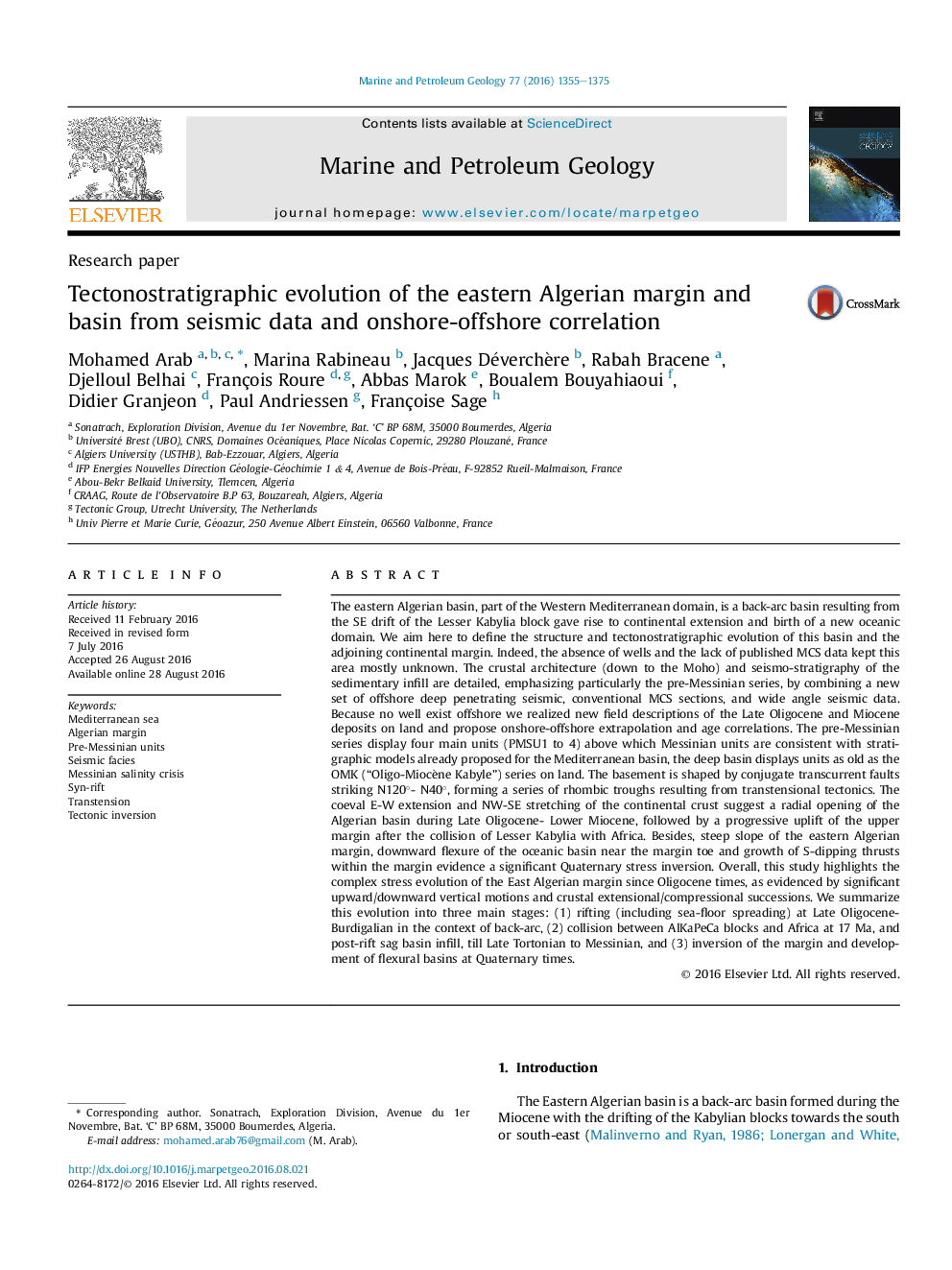| Article ID | Journal | Published Year | Pages | File Type |
|---|---|---|---|---|
| 6434706 | Marine and Petroleum Geology | 2016 | 21 Pages |
â¢Four seismic Pre-Messinian units have been defined in the deep offshore.â¢The basal Pre-Messinian unit records an early Oligo-Miocene rifting phase.â¢The first post-rift unit (Langhian) is a transgressive deposit located to the south of the intra-arc basins.â¢The eastern Algerian basin opened as a transtensional rift system with normal and transcurrent faulting before collision between AlKaPeCa and Africa.â¢S-dipping thrusts and downward flexure of the basin evidence a Quaternary tectonic inversion.
The eastern Algerian basin, part of the Western Mediterranean domain, is a back-arc basin resulting from the SE drift of the Lesser Kabylia block gave rise to continental extension and birth of a new oceanic domain. We aim here to define the structure and tectonostratigraphic evolution of this basin and the adjoining continental margin. Indeed, the absence of wells and the lack of published MCS data kept this area mostly unknown. The crustal architecture (down to the Moho) and seismo-stratigraphy of the sedimentary infill are detailed, emphasizing particularly the pre-Messinian series, by combining a new set of offshore deep penetrating seismic, conventional MCS sections, and wide angle seismic data. Because no well exist offshore we realized new field descriptions of the Late Oligocene and Miocene deposits on land and propose onshore-offshore extrapolation and age correlations. The pre-Messinian series display four main units (PMSU1 to 4) above which Messinian units are consistent with stratigraphic models already proposed for the Mediterranean basin, the deep basin displays units as old as the OMK (“Oligo-Miocène Kabyle”) series on land. The basement is shaped by conjugate transcurrent faults striking N120°- N40°, forming a series of rhombic troughs resulting from transtensional tectonics. The coeval E-W extension and NW-SE stretching of the continental crust suggest a radial opening of the Algerian basin during Late Oligocene- Lower Miocene, followed by a progressive uplift of the upper margin after the collision of Lesser Kabylia with Africa. Besides, steep slope of the eastern Algerian margin, downward flexure of the oceanic basin near the margin toe and growth of S-dipping thrusts within the margin evidence a significant Quaternary stress inversion. Overall, this study highlights the complex stress evolution of the East Algerian margin since Oligocene times, as evidenced by significant upward/downward vertical motions and crustal extensional/compressional successions. We summarize this evolution into three main stages: (1) rifting (including sea-floor spreading) at Late Oligocene- Burdigalian in the context of back-arc, (2) collision between AlKaPeCa blocks and Africa at 17 Ma, and post-rift sag basin infill, till Late Tortonian to Messinian, and (3) inversion of the margin and development of flexural basins at Quaternary times.
Graphical abstractDownload high-res image (180KB)Download full-size image
